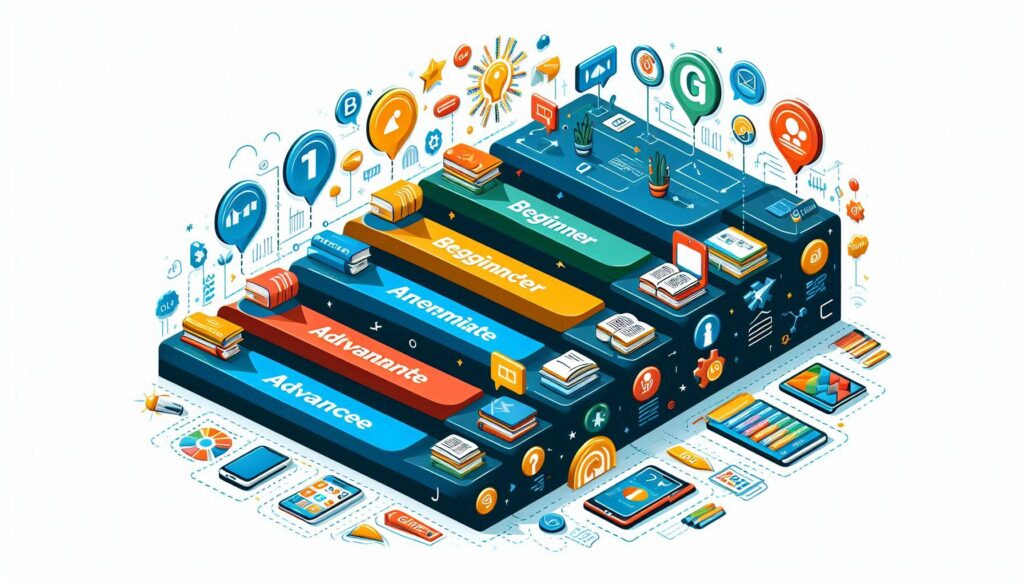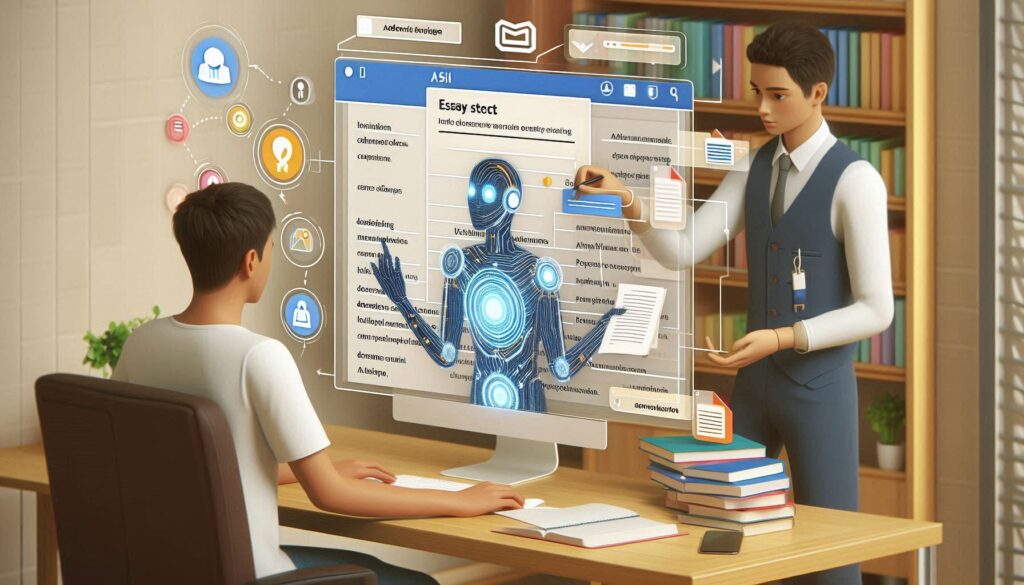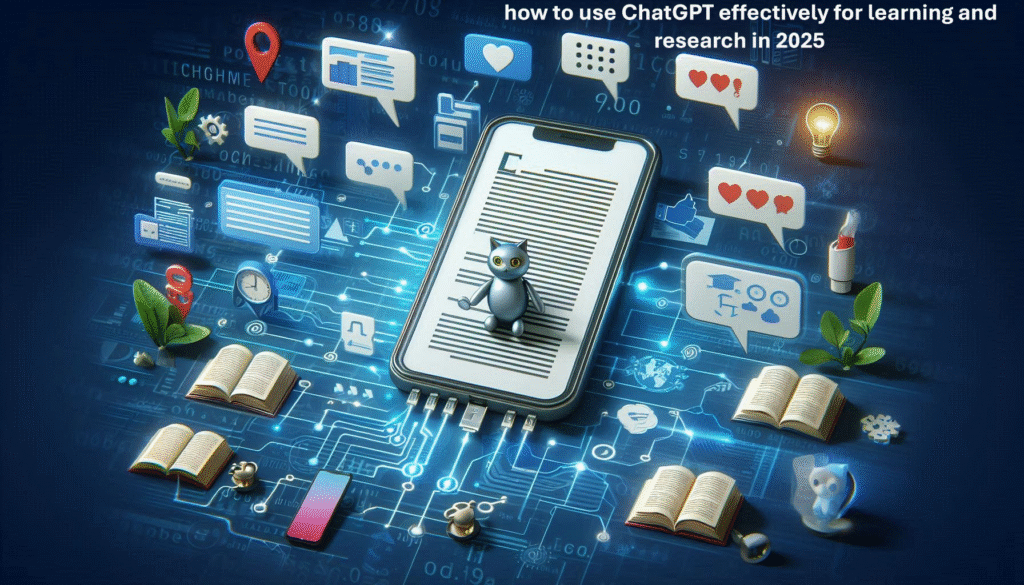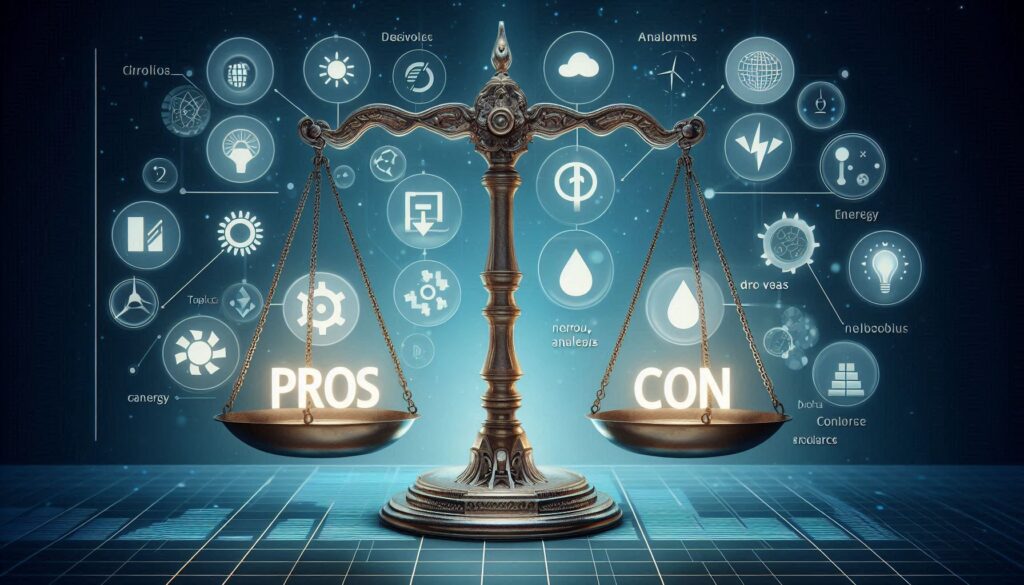Table of Contents
Toggle
In the rapidly changing world of artificial intelligence, 2025 has brought revolutionary shifts in how we access knowledge. Among the standout innovations leading this transformation is ChatGPT, an AI tool reshaping the way we learn and explore ideas. But simply asking questions isn’t enough anymore. To truly benefit, you need to learn how to use ChatGPT effectively for learning and research in 2025.
This blog post is your guide to mastering that skill. Whether you’re a high school student, a college student, or a self-learner, you’ll discover how to turn ChatGPT into your tutor, writing assistant, and research partner—all in one.
Why ChatGPT Is a Game-Changer for Learning

Before explaining the “how,” let’s clarify the “why.”
ChatGPT is not just another chatbot. It’s a smart assistant capable of:
• Breaking down complex topics
• Generating summaries and explanations
• Assisting with academic writing and editing
• Offering study plans, quizzes, and even flashcards
However, unlocking ChatGPT’s full potential for learning and research in 2025 requires more than casual use—it demands a thoughtful, strategic approach. That’s where strategy comes in.
Step 1: Define Your Learning Objective

Start every ChatGPT session with clarity. Know what you want.
Avoid general prompts such as “Tell me about photosynthesis.” Try something more specific, like:
“Explain photosynthesis for a 10th-grade biology test, using bullet points and examples.”
This sharp focus improves output quality. Being clear is the first rule of how to use ChatGPT effectively for learning and research in 2025.
Step 2: Break Topics into Levels

Complex topics are easier to learn when they’re broken down.
For example:
Prompt 1: “Break down the fundamentals of quantum mechanics in simple terms for a beginner.”
Prompt 2: “Now explain intermediate concepts with formulas.”
Prompt 3: “Move to advanced concepts with real-world applications.”
By working in layers, you can grasp even the most difficult subjects. This layered learning approach is a core technique in how to use ChatGPT effectively for learning and research in 2025.
Step 3: Create Study Notes in Your Style

ChatGPT can mimic any format. Want Cornell notes? Flashcards? Summary sheets? Just ask:
“Create Cornell-style notes on the French Revolution for history class.”
This ability to personalize content helps you absorb information better. You’re not just reading—you’re learning how to learn. And that’s the magic of how to use ChatGPT effectively for learning and research in 2025.
Step 4: Use ChatGPT for Active Recall

Passive reading doesn’t stick. Active recall is key.
Try this:
- Ask ChatGPT to quiz you:
“Give me 5 multiple-choice questions on World War II with answers.” - Or test yourself by hiding the answers.
This technique forces your brain to retrieve information, which boosts memory retention. Incorporating this method is one of the smartest ways to use ChatGPT effectively for learning and research in 2025.
Step 5: Draft Essays and Reports Smarter

Writing essays or reports? Don’t start from scratch.
Ask ChatGPT to:
- Generate a thesis statement
- Suggest an outline
- Recommend arguments with examples
- Rephrase or edit your draft
Use it as a collaborator, not a ghostwriter. The goal is to elevate your writing, not replace it. That’s a responsible and ethical way to use ChatGPT effectively for learning and research in 2025.
Step 6: Research Smarter, Not Harder

When doing research, ChatGPT can:
- Summarize academic papers
- Explain technical jargon
- Suggest related topics or references
Example prompt:
“Summarize this 15-page research paper into bullet points with citations.”
Even better, upload PDFs and ask it to extract key findings. This modern workflow is reshaping how to use ChatGPT effectively for learning and research in 2025.
Step 7: Use It to Explore Opposing Views

Want to write stronger essays or build critical thinking skills?
Ask:
“Can you outline the pros and cons of using nuclear energy?”
ChatGPT will give both sides, helping you evaluate issues more critically. This balance is essential in developing academic integrity, yet another reason how to use ChatGPT effectively for learning and research in 2025 matters so much.
Step 8: Turn Boring Notes into Visual Aids

Struggling with dry notes? Use ChatGPT to:
- Create mind maps
- Suggest infographic layouts
- List chartable data
While ChatGPT itself doesn’t make graphics, you can feed its outputs into Canva, PowerPoint, or AI image tools. This hack brings visual learners closer to mastering how to use ChatGPT effectively for learning and research in 2025.
Step 9: Get Help with Coding and Math

You can also use ChatGPT to:
- Solve math problems step-by-step
- Debug programming code
- Explain the logic behind algorithms
Whether it’s Python, Java, or Calculus, you’ll get customized help with reasoning. If you’re a STEM student, this is a major part of how to use ChatGPT effectively for learning and research in 2025.
Step 10: Build a Long-Term Learning Routine
Consistency beats intensity. Use ChatGPT to:
- Create daily study timetables
- Track topics covered
- Remind you of weak areas
Ask: “Build me a 30-day study plan for the UPSC history syllabus.”
Or “Make a weekly revision schedule for organic chemistry.”
This smart planning method redefines how to use ChatGPT effectively for learning and research in 2025, turning scattered sessions into long-term mastery.

Final Thoughts
If you’ve been wondering how to use ChatGPT effectively for learning and research in 2025, the answer lies in intention and creativity. The better your prompts, the better your results. Use it to spark curiosity, break mental blocks, and learn faster.
AI isn’t replacing education—it’s reshaping it. And those who master how to use ChatGPT effectively for learning and research in 2025 will stay miles ahead in this new age of smart learning.
FAQs:
Q1. Can I use ChatGPT to write my entire research paper?
You can use it for structure and support, but never copy blindly. It’s best as a brainstorming or editing partner.
Q2. Does ChatGPT replace the need for textbooks or classes?
No. It complements them. Think of it as a tutor, not a teacher.
Q3. How do I avoid getting inaccurate answers?
Always fact-check against reliable sources. Combine AI with human judgment.
Q4. Is it okay to use ChatGPT in academic exams or assignments?
Only if your institution allows it. Follow ethical guidelines.
Q5. Can I use ChatGPT for competitive exam prep?
Yes! It’s great for creating quizzes, revising concepts, and planning strategy.
Related Blogs
1. Top AI Business Automation Tools to Streamline Your Workflow in 2025
2. How to Make Money Using AI Tools In 2025
3. 5 AI Tools for Goal Setting and Habit Tracking That Deliver Results
4. Top AI Tools to Improve Academic Performance in 2025 for Better Results
5. Top 5 AI Apps Every Student Should Try in 2025
In 2025, mastering how to effectively utilize ChatGPT for learning and research is essential for students seeking academic excellence. This guide provides comprehensive insights and techniques to maximize the benefits of ChatGPT in educational and research settings, ensuring students make the most of this powerful tool.


Pingback: Top AI Video Creator Tools for Content Creators in 2025 - AlphhaAI
Pingback: Top 10 Best AI Productivity Tools for Entrepreneurs in 2025 - AlphhaAI